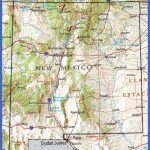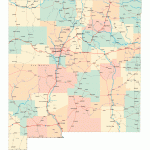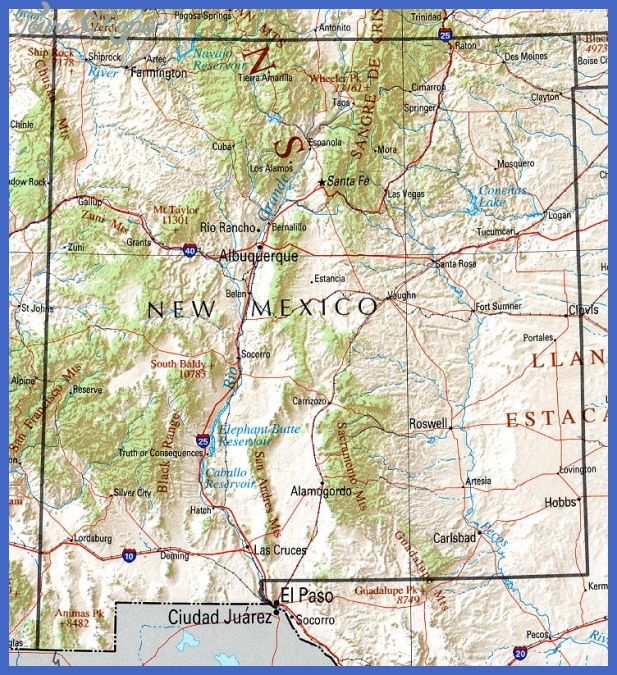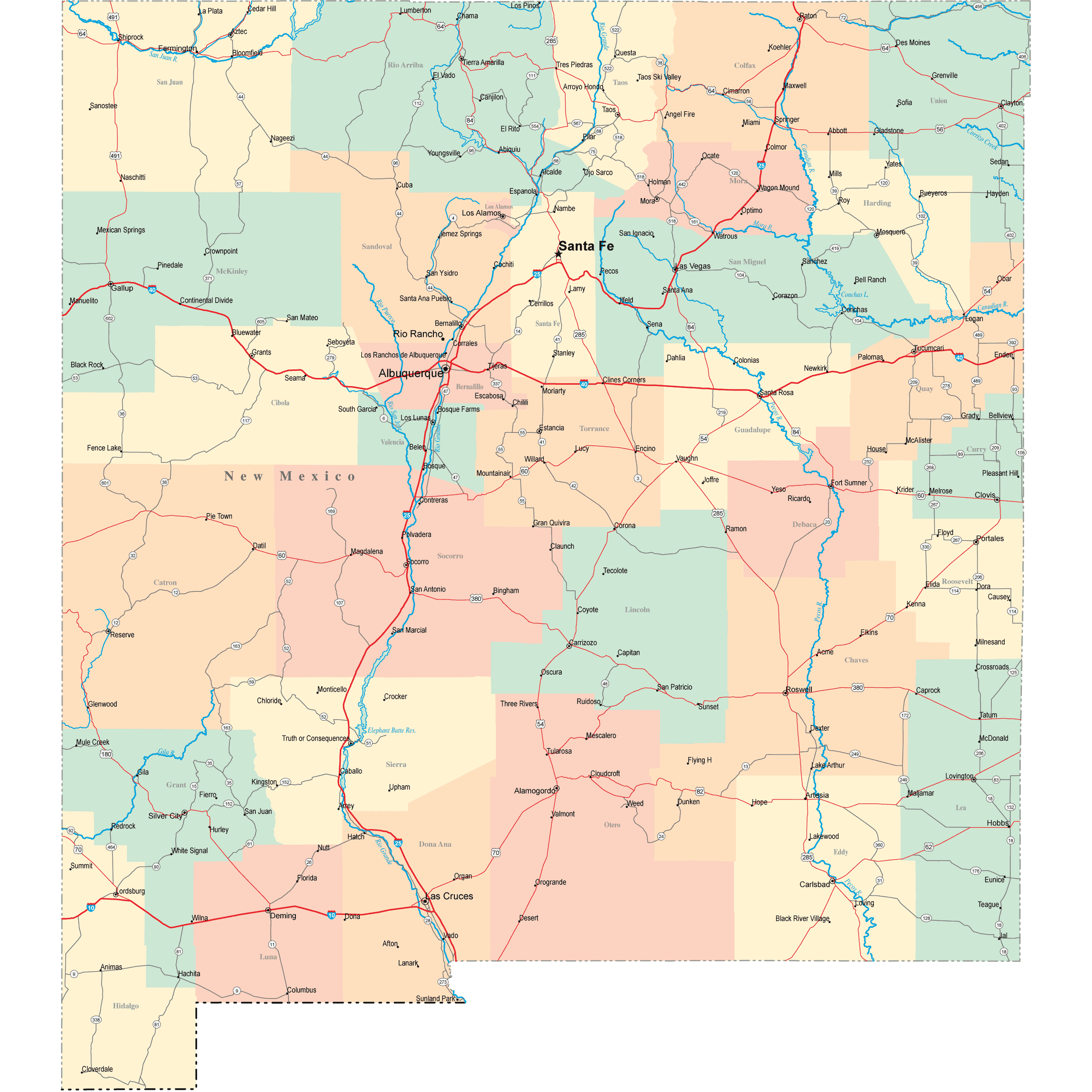New Mexico CULTURAL CONTRIBUTIONS Religion and Religious Art
Catholicism was brought to New Mexico by Spanish Franciscan missionaries whose presence and dominance in New Mexico would place a unique stamp on the development of religion there. The geographic and administrative isolation of New Mexico from the rest of New Spain also meant a unique frontier religion which mixed Native American and Spanish cultural traditions. And given the shifting nature of politics after New Mexico’s inclusion in the United States, religion would take on an ethnic characteristic that added further complexity to its character.
The Franciscans were one of the most powerful mendicant orders of New Spain. At the request of Cortes, they came to Mexico in 1524 as first missionaries, and they would quickly establish themselves in a position of power and authority. The ideology of conversion was brought to New Mexico with Onate. The Franciscans promoted mass baptisms of Native Americans as well as the suppression of native customs viewed as sexually provocative or demonic. The Church in New Mexico would remain under the near monopoly of the Franciscans for most of the colonial era. New Mexico was part of the diocese of Guadalajara until 1621. In that year Durango was made into a diocese with jurisdiction over New Mexico, jurisdiction which lasted until the nineteenth century. The presence of the Franciscans was thus administratively nearly exclusive, but it was also weak demographically. The ultimate result is that Catholicism developed a fairly local character in New Mexico.
This local character can be viewed through the forms of religious art and ceremonies that developed during New Mexico’s long history. Nuevomexicanos adapted their techniques using local materials. Religious imagery of the colonial era was painted on elk, buffalo, and deer hides or carved from local woods such as aspen or cottonwood. Among the prominent forms of religious art were retables (sometimes also called reredos) altar screens that display saints or other religious imagery crucifixes, bultos (saint statues) and gesso reliefs (a retable made from gesso and cloth). These very old Nuevomexicano traditions continued through the colonial era and into the contemporary period, being carried down to today through a very self-conscious attempt to preserve Hispano Catholic artistic traditions. For example, la Escuela Artesana a kind of loosely affiliated group of carvers from the 1970s through the 1990s promoted a specifically Nuevomexicano cultural heritage at a time when Native American art was in vogue among consumers of high-end art. Likewise, Chicano artists Luis Tapia and Federico Vigil looked specifically to Nuevomexicano traditions as a way of asserting both politically and culturally the uniqueness of the Hispano traditions of New Mexico. They founded the Cofradla de Artes y Artesanos Hispanicos with the goal of promoting traditional Hispanic arts.
Other characteristics of Nuevomexicano Catholicism go beyond the plastic arts and imagery. Indeed, prior to the nineteenth century the elements of Hispanic Catholicism that were present in much of the Spanish world veneration of Mary, pilgrimages, and local shrines seem to have been largely absent from New Mexico. Rather, a kind of adaptive Catholicism emerged that was more associated with social interaction than religious piety. This does not mean that Nuevomexicanos were somehow less Catholic but that other forms of Catholic activity seem to have emerged. Among the most notable was the emergence in the late colonial period of the Brotherhood of the Blood of Our Lord Jesus Christ. Known as penitentes, members of this lay organization preserved traditional Nuevomexicano religious art and, more famously, engaged in ritualized public self-flagellation as penance for the sins of humanity. Whipping themselves to a bloody pulp, the penitentes organized spectacles of processions.
The Brotherhood was however under siege because of a reform within Spanish Catholicism in the nineteenth century. Self-flagellation was actually made illegal in the late 1700s, but New Mexico’s isolation allowed it to continue. Lamy, the bishop of Santa Fe after it was made into a diocese in 1853, thought the Brotherhood was primitive and backward, but a New Mexico priest, Jose Martinez, promoted the Brotherhood as an expression not only of spirituality but of Nuevomexicano cultural tradition. Nuevomexicanos rightly resisted Lamy, pointing out that they had been in New Mexico for centuries and understood the local culture a good deal better than outsiders who had been imposed by the Church structure. In many ways the earliest roots of a politicized tension between Anglos and Nuevomexicanos found its cultural expression in the clash between Lamy and Martinez.
Other forms of religious devotion would emerge in the nineteenth and twentieth centuries that would mark New Mexico’s cultural tradition. The shrine at Chimayo became the principal pilgrimage site in New Mexico. At the same time New Mexico’s closeness to Mexico meant that the cult of the Virgin of Guadalupe was adopted there. This also brings up the issue of the influence of Mexicans on New Mexico’s religious culture. Immigration from Mexico to New Mexico is pronounced in the southern part of the state, which has religious traditions with a heavier Mexican influence. The feast day of the Virgin of Guadalupe is celebrated on the night of December 11 and into December 12, and the Day of the Dead (November 2), a deeply integrated cultural tradition in Mexico, has begun to see greater observance in New Mexico.
Religion in New Mexico became increasingly political in the twentieth century. Through the colonial period and the nineteenth century, Catholicism was something linked to cultural identity and spiritual activity. But once New Mexico was made part of the United States, Catholicism would take on different dimensions. Hispano and Nuevomexicano Catholicism was seen by many Anglos as backward
and superstitious. Nuevomexicanos reacted to this by reasserting both Catholicism and their Hispanic cultural heritage as opposed to the paternalism of Anglo and Protestant culture.
By the 1970s, when Chicano political activism was in its heyday, and through the rest of the twentieth century, there had been very serious debates about the role of Catholicism in general and Nuevomexicano Catholicism in particular. In 1974 Robert Sanchez became archbishop of Santa Fe. Differently from many previous bishops such as Lamy, Sanchez embraced and openly promoted Nuevomexicano cultural traditions from within the Catholic Church. He promoted the use of Nuevomexicano music, vestments, and organizations such as the Brotherhood. Under his tenure Catholicism in New Mexico experienced a kind of florescence images of the Virgin of Guadalupe appeared in churches and the Sanctuary of Chi-mayo emerged as a kind of symbol for Nuevomexicano cultural Catholicism.13
If on the one hand Chicano activism was characterized by imagery, on the other it was specifically political. Enrique Lamadrid saw Anglo tourism in and U.S. control of New Mexico as a kind of cultural imposition. Hispano Catholicism was for him a kind of cultural resistance. He wrote thus: Religion takes on the added significance of a cultural as well as spiritual refuge. Traditional symbols are reinvested with a new urgency and power upon which rests the very survival of group identity.14 The Senor de Esquipulas, La Virgen Conquistadora, the Virgin of Guadalupe, pilgrimages, and processions all thus express not only Nuevomexicanos’ relationship to the divine but also their connection to cultural uniqueness.
New Mexico Map Photo Gallery
Maybe You Like Them Too
- Explore Sasbach, Germany with our Interactive Map
- Explore Nevestino, Bulgaria with this Detailed Map
- Explore Pulau Sebang Malaysia with this Detailed Map
- Explore Southgate, Michigan with this detailed map
- Explore Les Accates, France with this Detailed Map




